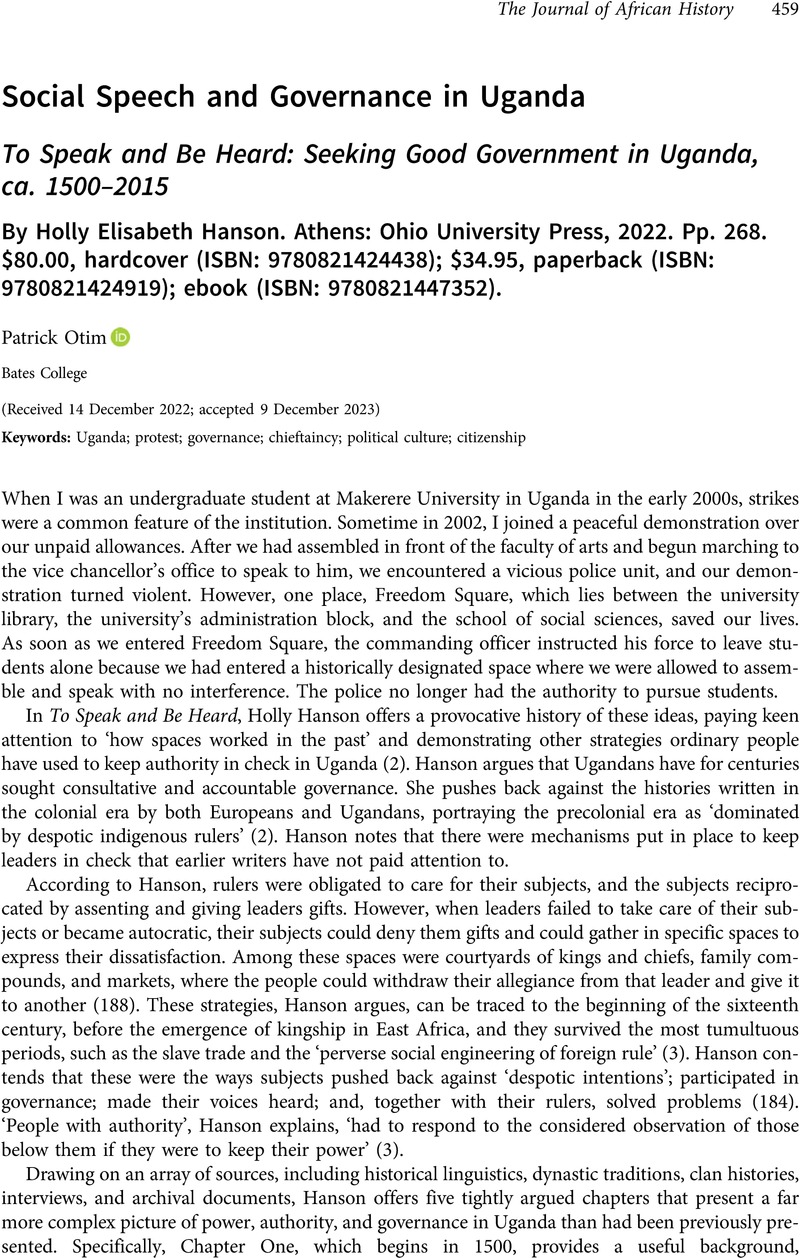No CrossRef data available.
Published online by Cambridge University Press: 05 January 2024

1 For some of the important works on power and authority in precolonial Africa, especially on Uganda and Africa's Great Lakes region, see Schoenbrun, D., The Names of the Python: Belonging in East Africa, 900 to 1930 (Madison, 2021)CrossRefGoogle Scholar; Kodesh, N., Beyond the Royal Gaze: Clanship and Public Healing in Buganda (Charlottesville, 2010)Google Scholar; Hanson, H. E., Landed Obligation: The Practice of Power in Buganda (Portsmouth, NH, 2003)Google Scholar; Reid, R., Political Power in Pre-Colonial Buganda: Economy, Society, and Warfare in the Nineteenth Century (Oxford, 2002)Google Scholar; Schoenbrun, D., A Green Place, a Good Place: Agrarian Change, Gender, and Social Identity in the Great Lakes Region to the 15th Century (Portsmouth, NH, 1998)Google Scholar; Newbury, D., Kings and Clans: Ijwi Island and the Lake Kivu Rift, 1780–1840 (Madison, 1991)Google Scholar; Arens, W. and Karp, I., Creativity of Power: Cosmology and Action in African Societies (Washington, DC, 1989)Google Scholar.
2 For some of the important works on power and authority that have stopped in either the late precolonial era or early colonial era, see Schoenbrun, The Names of the Python; Schoenbrun, A Green Place, a Good Place; Kodesh, Beyond the Royal Gaze; Reid, Political Power in Pre-Colonial Buganda; Hanson, Landed Obligation, and Newbury, Kings and Clans.